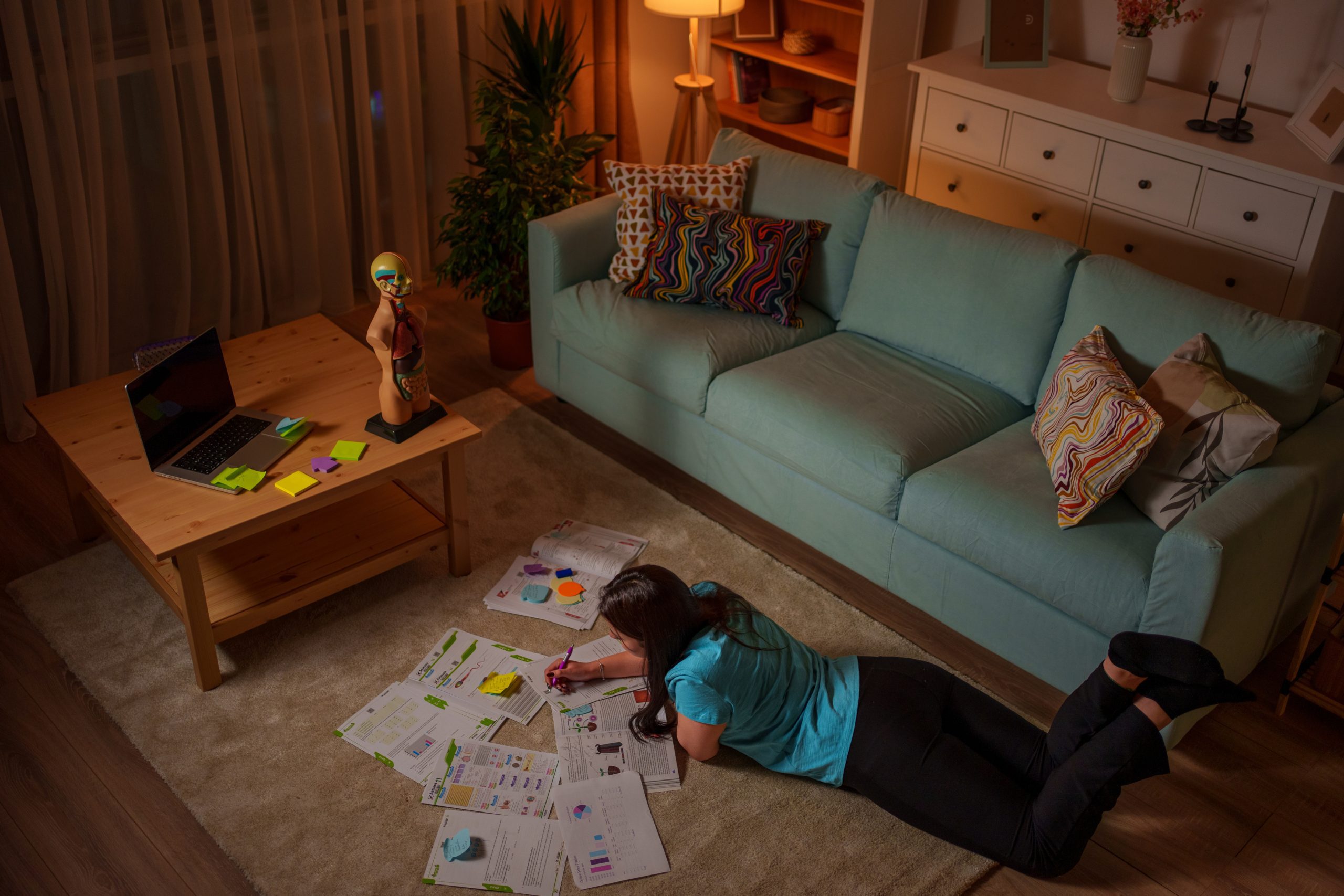The virtual residency interview process is relatively new for medical students. It can be daunting for applicants and interviewers alike, but other fields have held virtual interviews for years. Let us draw inspiration from our friends outside of medicine and their experiences to help us through this process.
6 Tips for a Stellar Virtual Residency Interview
1. Set up a mock interview.
Your mock interview can be with a mentor, a friend, a significant other, or even record yourself on a separate device.
Don’t place the camera too close or too far that your face appears distorted, and have your face in the center of the frame with your shoulders visible at the bottom.
Practice speaking at an audible volume that’s not too loud or offensive. Make sure you set up close to an outlet so your device stays charged and doesn’t power down on you.
Sit in a comfortable, stationary chair. Do not fidget or swivel in your chair. It is noticeable, distracting, and looks unprofessional.
Practice how you play—avoid excessive face touching, rid yourself of the “uhs, ums, and likes,” and be confident in your responses. Obtain feedback during your mock interviews and work to improve your interviews.
2. Double check your technology.
If your internet connection is slow, your video will lag behind your audio. You’ll notice this in your practice interviews, and if this is the case, hold your interview somewhere with faster internet. Most med schools or libraries have separate, closed off rooms you can reserve for an hour or two at a time.
Worst case scenario, go to a friend’s house with a better connection. AAMC has a more comprehensive PDF for virtual interviews.
3. Be prompt and professional
You literally just need to log on, so do it on time. The old excuses don’t work anymore. You can’t say, “Oh, but my Uber got lost.” or “My flight was delayed.” in a virtual interview.
Most programs have a host to let you into the virtual room. Do not be the applicant who makes the host wait.
4. Look good.
Wear your entire suit. There are too many stories of someone getting out of their chair to grab something or run to the restroom, only to flash his or her undergarments to the interviewer. You’re in the comfort of your own home, so just wear the suit. All of it.
Pro Tip: Don’t wear pinstripes!
Also, make eye contact. Practice this in the mock interview. It seems awkward but you’d do it in an in person interview right? Relax and smile. Use your facial expressions, your hands, and your body language to express your passion and interest in medicine and in the program.
5. Communicate any issues that arise.
If problems occur, tell the interviewer ASAP. Your battery is dying? Someone is knocking on your door? Acknowledge distractions or outside noise early on so as to not jeopardize the entire interview. Find another way to continue the interview in the case of further interruptions. If the interview is untenable, ask if there is a protocol for a repeat interview, perhaps over the phone.
6. Do a noise check.
Avoid extraneous noise by having your interview in a quiet place—a private study room at the library or at school. Or at a friend or mentor’s house with faster internet and less noise. If you have kids, hire a babysitter or have your significant other take them out of the house for those one or two crucial hours.
Read on for more virtual interview tips:
Virtual Interview Tips from the MST ERAS Summit
Telemedicine Camera Tips: From the Actor, to the Medical Student





